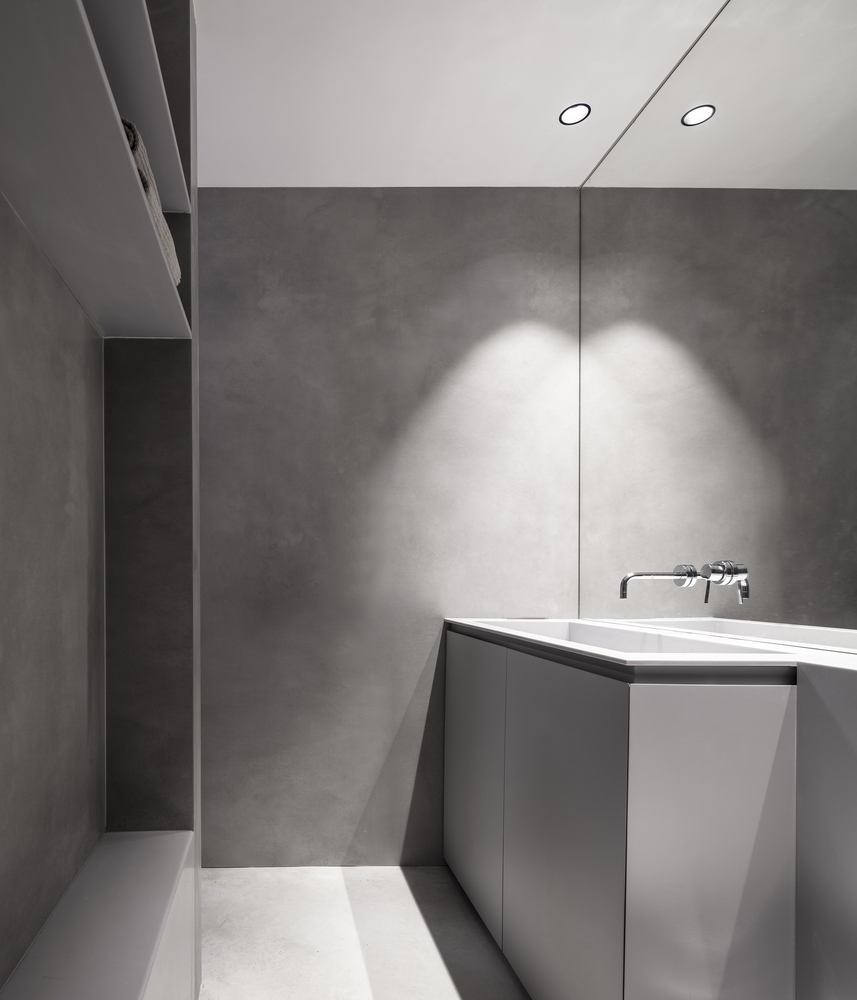AD Classics Wall House 2 John Hejduk, Thomas Mullervan Raimann Architekten - Otonomo Architecten
2012-02-06 00:00
架构师提供的文本描述。与其他历史不同的是,“墙屋2”重新定义了建筑设计的界限,将其作为时间和文化背景的函数。在最初设计完成28年后,建筑师约翰·海杜克去世一年后,建筑开始于一个与最初想象完全不同的环境中。
Text description provided by the architects. With a history unlike any other, Wall House 2 redefines the limits of architectural design as a function of context in both time and culture. 28 years after the completion of the initial designs and one year after the death of architect John Hejduk, construction began in a completely different environment than where it was initially imagined.
这座房子是对内外关系的研究,让人想起科布西亚式的建筑,虽然有点古怪。
The house is a study of the relationship between inside and outside and is reminiscent of Corbusian architecture, although a bit more eccentric.
这座住宅最初由美国建筑师约翰·希杜克(JohnHejduk)于1973年为纽约库珀联盟(Cooper Union)欧文·沙宁建筑学院(Irwin S.Chanin School of Architecture)的一名教职员工设计,该学院将在康涅狄格州的里由于该林区的建筑费用估计很高,该项目被搁置。
The residence was initially designed by American architect John Hejduk in 1973 for a fellow faculty member at the Irwin S. Chanin School of Architecture at the Cooper Union in New York, to be constructed in Ridgefeld, Connecticut. Due to the high estimated costs of construction in the wooded area, the project was put on hold.
由于缺乏资金,从潜在客户转到潜在客户,在开工前就一直被放弃。这是直到荷兰格罗宁根的一家开发公司对该项目特别感兴趣,并决定以2500平方英尺的价格为该项目提供资金。直到约翰·希杜克意外死亡,这座房子才开始建造。
Passing from potential client to potential client, it was always being dropped before the beginning of construction due to lack of funding. That is until a development company in Groningen, the Netherlands, took special interest in the project and decided to fund the construction at 2,500 square feet. It was not until the unexpected death of John Hejduk that construction on the house began.
“墙2”是超现实主义雕塑、立体派绘画和建筑的融合,体现了约翰·海杜克作为一名艺术家、诗人、教育家和建筑师的身份。他的作品的灵感往往来自勒柯布西耶和米斯范德洛,在那里他学会了专注于更平坦的建筑形式,以及专注于纯卷。
Wall House 2 is admired for it's fusion of Surrealist sculpture, Cubist paintings and architecture, which reflect John Hejduk's identity as an artist, poet, educator and architect. Inspiration for his work often came from Le Corbusier and Mies van der Rohe, where he learned to focus on the more flat dimensions of architectural form as well as the focus on pure volumes.
围绕着水平和垂直平面的中轴线组织起来的,三维允许体验空间。伴随着这些,一个二维平面断开了连接,但同时也将功能空间组合在一起,这些功能空间相互分离,同时强调了住宅的诗意性。
Organized around a central axis of horizontal and vertical plane, a three-dimensionality allows for experiencing the spaces. Accompanying these, a two-dimensional plane disconnects but at the same time groups the functional spaces which appear separate from one another while emphasizing the poetic nature of the residence.
使用浅色可以在视觉上区分体积,可以通过位于墙后侧的螺旋式楼梯进入。通过仔细设计Hejduk来划分空间,墙壁似乎是独立的,因为它有一个与卷的玻璃连接。
Use of light colors encourages visual distinction between volumes, which are accessible by means of a spiral staircase that sits at the backside of the wall. Dividing the space, the wall appears to be freestanding through the careful design of Hejduk, as it is supported with a glass connection to the volumes.
“这堵墙是一个中立的条件。所以它总是涂成灰色。墙代表着钻石屋中低音的时间-这是最大的休息时刻,同时也是最大的张力。这是一个通过的时刻。墙提高了通道的感觉,同样地,它的稀薄也增加了它只是瞬间状态的感觉.我称之为现在的时刻。“
"The wall is a neutral condition. That's why it's always painted gray. And the wall represents the same condition as the time of the hypotenuse in the Diamond Houses - it is the greatest moment of repose, and at the same time the greatest tension. It is a moment of passage. The wall heightens that sens of passage, and by the same token, its thinness heightens the sense of it being just a momentary condition... what I call the moment of the present."
进入房间后,游客遇到一段楼梯,通向书房、厨房和餐厅,这些空间都是生物形状的,很有特色。一楼有一间卧室,顶层是客厅。每个卷似乎都是悬臂式的,但实际上漂浮的质量是由一个柱状网格支撑的。这增加了墙壁2的戏剧性设计,因为大墙变成了象征性的,而不是结构的。
Entering the house, the visitor encounters a flight of stairs which leads to the study, kitchen and dining room, all biomorphically shaped spaces with much character. The first floor contains a bedroom, and the top floor holds the living room. Each volume appears to be cantilevered, but in actuality the floating masses are supported by a grid of columns. This adds to the dramatic design of Wall House 2, as the large wall becomes symbolic, not structural.
最近建造的“墙屋2”的一个有趣的方面是它的可访问性;业主将住宅划分为公共、半公共和私人住宅,以便所有人都能体验和解释这一建筑。艺术家被邀请参加他们居住在建筑中的居住项目,以研究建筑中空间的诗学。
An interesting aspect of the recently constructed Wall House 2 is its accessibility; the owners have divided the residence into public, semi-public and private quarters, so that the architecture may be experienced and interpreted by all. Artists are invited to participate in the residence program in which they reside in the building to research the poetics of space in architecture.
约翰·海杜克自己说:“如果一位画家能通过一次变换,把一幅三维静物画成一幅自然凡人,建筑师就能把一幅画中的自然凡纳画成一幅画,并通过一次变换,把它塑造成静物?”
Said by John Hejduk himself, "If a painter could by a single transformation take a three dimensional still life and paint it on a canvas into a natura morta, could it be possible for the architect to take the natura morta of a painting and, by a single transformation, build it into a still life?"
 举报
举报
别默默的看了,快登录帮我评论一下吧!:)
注册
登录
更多评论
相关文章
-

描边风设计中,最容易犯的8种问题分析
2018年走过了四分之一,LOGO设计趋势也清晰了LOGO设计
-

描边风设计中,最容易犯的8种问题分析
2018年走过了四分之一,LOGO设计趋势也清晰了LOGO设计
-

描边风设计中,最容易犯的8种问题分析
2018年走过了四分之一,LOGO设计趋势也清晰了LOGO设计
































































































